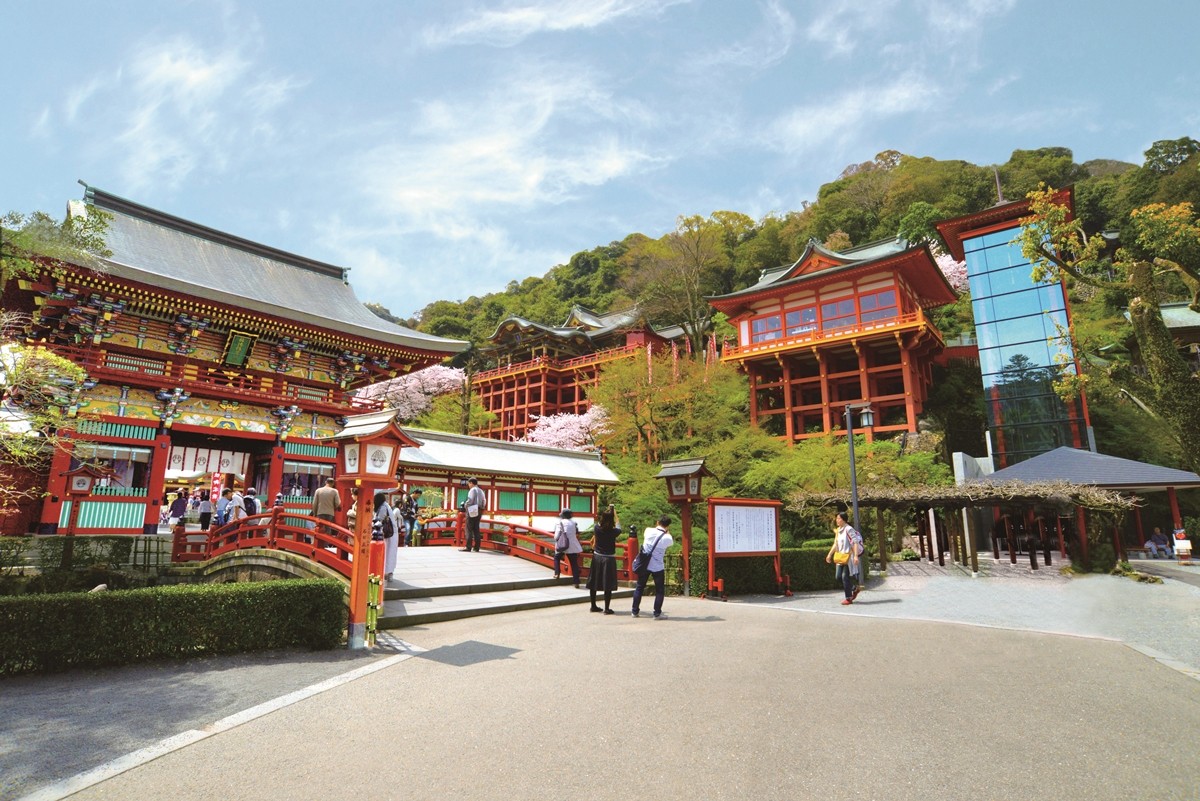
Yutoku Inari Shrine (祐徳稲荷神社) in Kashima City, Saga Prefecture is one of Japan's three largest Inari shrines. The richly colored tower gate and the main hall, which is taller than even the main hall of Kiyomizu-dera in Kyoto, are spots where you can aim for especially great photos.
Beautifully Photogenic! The Brilliantly Colored Tower Gate of Yutoku Inari Shrine
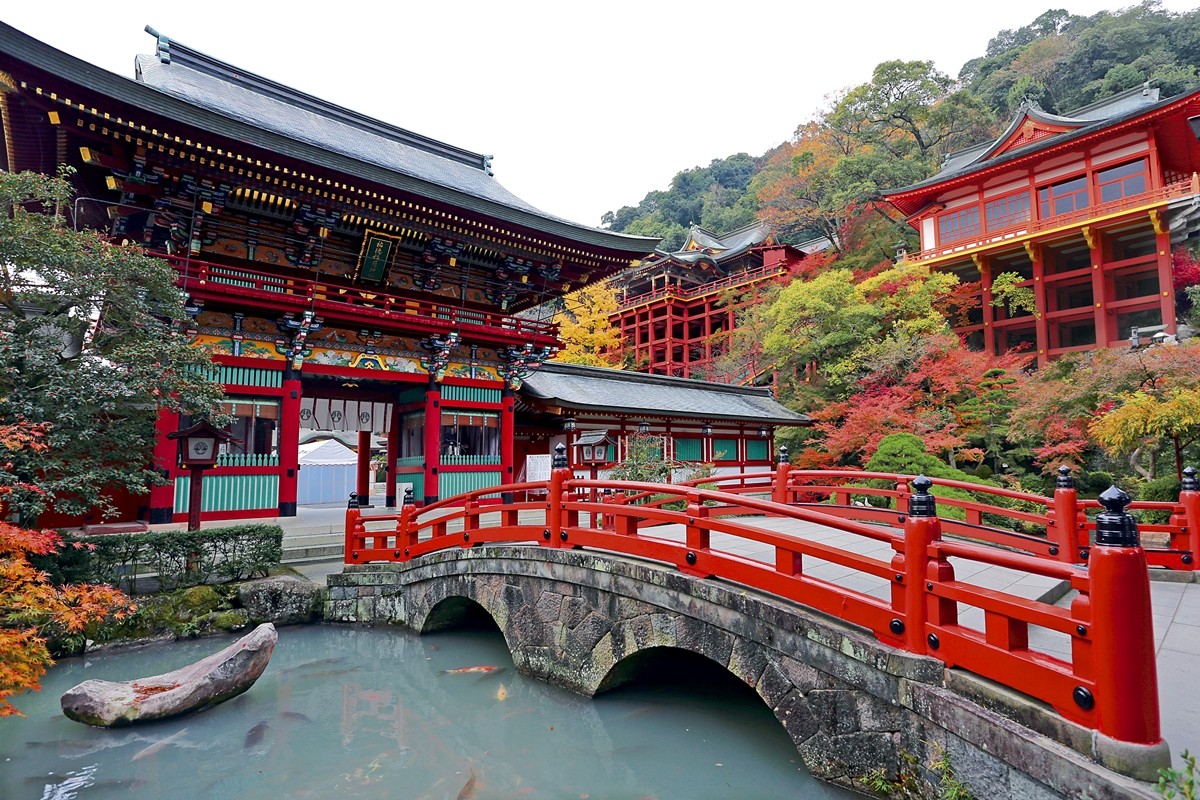
The Tower Gate is the first thing you see when you enter the shrine precincts. It is modeled after the Yomei-mon Gate of Nikko Toshogu, and the colors are vivid and beautiful. To the left and right are statues of gods made of Arita ware, a traditional porcelain craft from Saga Prefecture. A recommended spot for taking pictures of the shrine is from the behind the pond that stands next to the gate, where you can get a picture including the pond, gate and main hall all at once. In autumn, the large ginkgo tree in front of the main shrine also turns beautifully yellow.
Overwhelmingly Huge! Gohonden, The Main Hall on the Mountainside
The Gohonden (御本殿) is the main hall located on the mountainside. With the mountain at its back, it is suspended about 18 meters off the ground by a construction method called Kake-zukuri (懸造り). When going up, you should use the uphill approach (上り参道), and when going down, use the downhill approach (下り参道) stairs. On the ceiling of the main hall are painted two gorgeous phoenixes. Under the main shrine is the Iwasaki Shrine (岩崎社), known for enshrining gods of matchmaking.
Photogenic! A Long Line of Red Torii Gates in Yutoku Inari Shrine
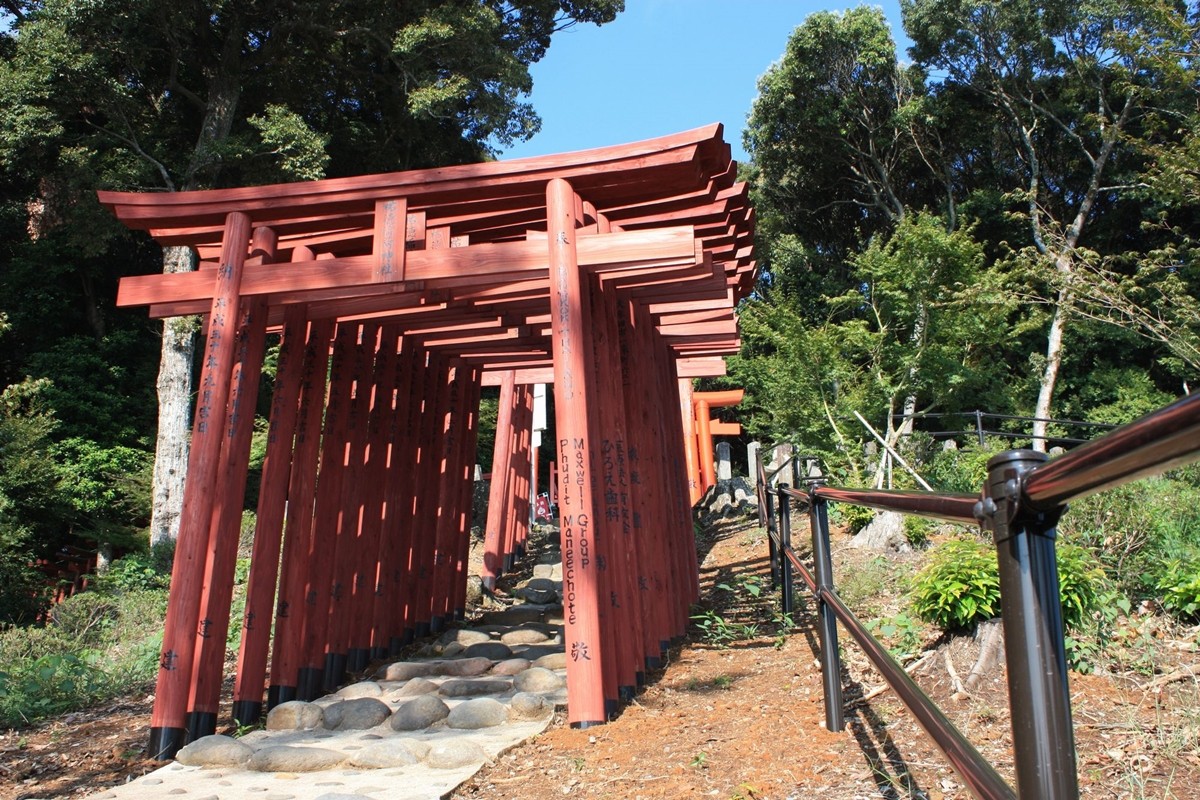
The approach leading from the main shrine to the Okunoin is a photogenic spot with red torii gates running along the path. It is said that the reason that torii are red is that it refers to the warmth of spring, the season of cultivation and new growth.
Excellent Views! Take a Rest on a Bench at the Okunoin of Yutoku Inari Shrine
The Okunoin is the place you reach after you pass through the red torii gates. Located at the top of the mountain, you can see from the Ariake Sea to Kashima City. There is also a bench there, so take a break and enjoy the view.
The Azalea Festival Held at Higashiyama Azalea Garden and Flower Garden
The Higashiyama Azalea Garden, which is located across the Shinbashi bridge from the main shrine, is overwhelmingly beautiful when you stand at the bottom and look up at the about 50,000 azaleas sprawling down the slope. An azalea festival is held from mid-April to early May, attracting many visitors who wish to see the flowers. The flower garden at the top of the mountain has rape blossoms, cosmos, cherry blossoms, and many other flowers that you can enjoy flowers in all 4 seasons. The Japanese garden within the precincts allows you to enjoy seasonal flowers whenever you visit, such as plum blossoms in February, peonies in April, morning glories in September, and the autumn leaves.
Amulets of Yutoku Inari Shrine
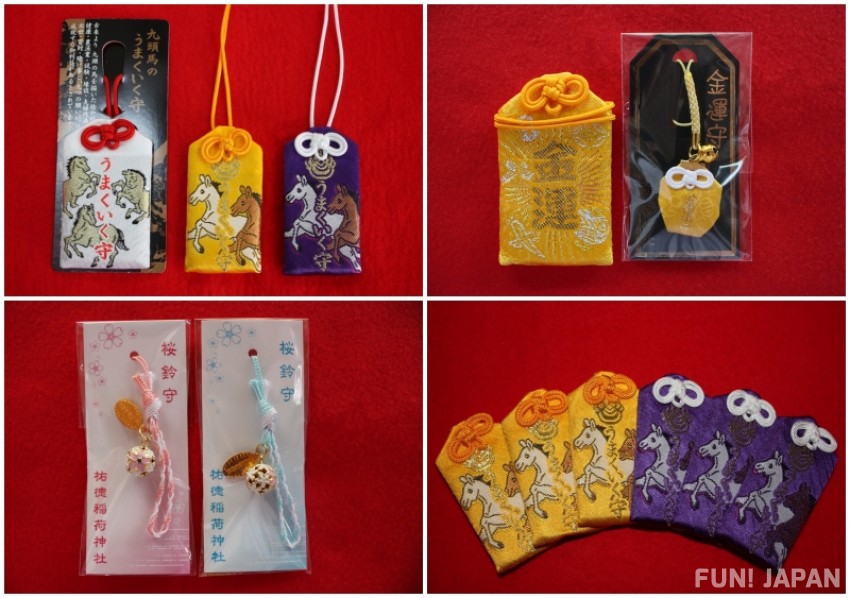
Available amulets include the Umaku-iku Mamori, or Amulets for Success (white, yellow or black) which has a horse motif (a pun on the name of the amulet) to make your wishes go well, the Kin-un Mamori or Amulets for Commercial Success (large and small sized available) that's for better luck with money, and the Sakura Suzu Mamori, which is a bell with a cherry blossom design (Pink or light blue).
About Shrine or Temple or Castle
- Founding year: 1687
- Shrine Gods : Uganomitama-no-okami (Inari Okami, God of daily life in general), Omiyanome-no-okami (god of the arts or of prosperity), andSarutahiko-no-okami (god of traffic safety)
- Festivals: Gantan Festival (1st January), Setsubun Festival (3rd February), Rice-planting Festival (mid-June), Shuki Taisai Festival (Fire-making ceremony) (8th December), etc.
Spot Information
- Spot name: Yutoku Inari Shrine (祐徳稲荷神社)
- Street Address: 1855 Furueda, Kashima City, Saga Prefecture 849-1321
- Access:
- After getting off at the JR Nagasaki Main Line's Hizen Kashima Station, take the Yutoku bus bound for Yutoku Jinja Mae from the Kashima Bus Center in front of the station, which takes about 10 minutes. The shrine is a very short walk from the Yutoku Jinja Mae bus stop.
- From JR Nagasaki Main Line's Hizenhama Station, it takes about 10 minutes on foot to the nearest bus stop, so if you only want to visit Yutoku Inari Shrine, use Hizen Kashima Station.
- Wifi: Free Wi-Fi available
- Language: The official website is in English
- Local brochures are available in English, Korean, and Traditional Chinese
- Entrance Ticket: Free
- Holidays: Open year-round
- Admission time: Always open
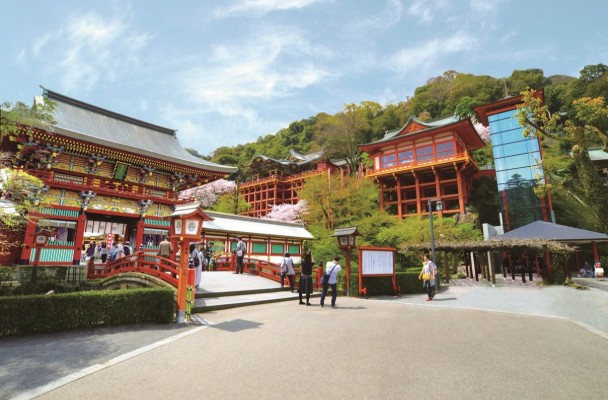
Comments